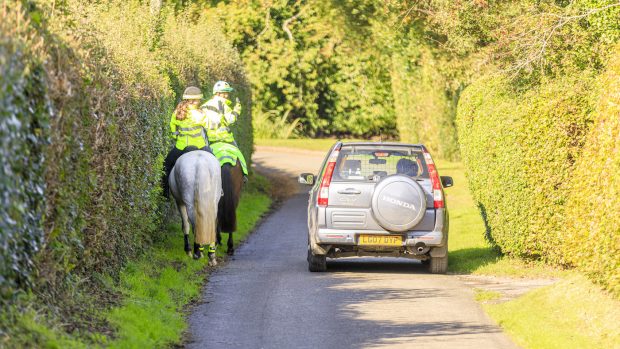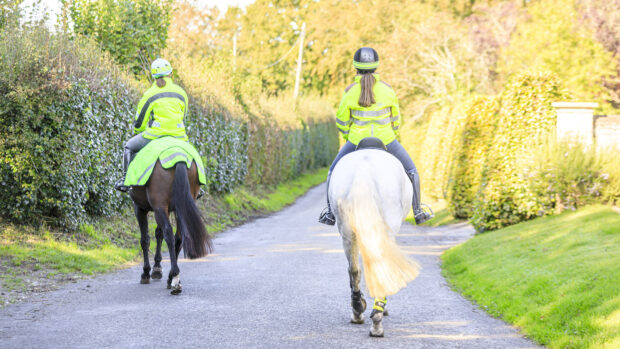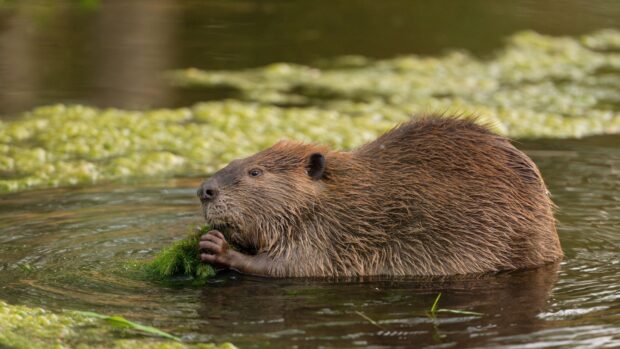Even if you’re lucky enough to have great off-road hacking, introducing your horse to traffic is a sensible step. Whether it’s in the car park at the vet clinic or the lorry park at a show, every horse will come across traffic at some point and it makes sense to do everything you can to reduce the risk of an accident.
“The first thing to say, and this applies to all training when introducing something new to a horse, is start with a safe environment that you can manage,” says Jason Webb, a trainer who specialises in starting young horses and retraining those with problems.
“There are horses with whom you can just say, right I’m going to introduce the horse to traffic, and you just go for a ride out on the road and you can get away with it, but for safety’s sake and your horse’s ongoing future in terms of being able to deal with those environments, it’s best to do things with a process.
“That means being able to increase the intensity of an environment to increase your horse’s ability to cope and reduce the amount of energy in an environment so it’s manageable and doesn’t push the horse into an incoherent flight state.”
Before starting the process of introducing your horse to traffic, Jason says you need some basics, including being able to control flight, such as by using one-rein controls and bending the horse.
“This puts your horse in a shape that means they can’t drive,” he says. “It disengages the hind end and engine. Their ability to run is hindered.
“It also means the horse’s head comes round and not up. When a horse’s head is up, they tend to be more anxious and adrenalised. In this sort of situation, you won’t generally be able to force your horse to put their head down, but what you will be able to do in a bend is relax one half of your horse and allow energy to dissipate by moving round in a circle.
“That’s really important because if you hold with two reins, energy is trapped and can explode out in all sorts of unwanted ways.”
Introducing your horse to traffic: a five-point plan
1. Assess your horse’s responses
Jason suggests starting by leading your horse into somewhere like the car park at your yard and letting them look around.
“Just note how your horse is coping in that environment,” he says. “Are they really looking at the traffic? Do they become more aware or flighty or are they just normal? This gives you an idea of how to move on from this point.”
If your horse is anxious, Jason suggests repeating this exercise, not forcing the horse to look at the vehicles or touch them, but just letting them take in the environment and absorb it all.
“Once they start to get familiar with it, you’ll start to see them become more inquisitive. Then you can start to approach areas you might not have been able to approach before.”
2. Use tying up
Jason’s next step is to tie the horse up and drive a vehicle smoothly past them, with the distance depending on their responses during step one.
He says: “It’s important not to creep. I just move the vehicle consistently past them. Horses like to see a rhythm and pattern. If you’re moving erratically, it makes it harder for horses to process and therefore makes a more anxious or flight response.”
If the horse gives no response, then Jason will start to bring the vehicle closer, until it’s in a place where the horse is just able to tolerate it, and then he’ll repeat the exercise until the horse starts to relax.
“The important part is that my horse doesn’t swing from left to right while this is happening and I can control this by using the standing on the tie exercise. The reason this is so important is because I want to be the person to show the horse that where I’ve put them is a perfectly safe place to be even when traffic is moving past – that not only gets them used to traffic going past them, but it gets them used to you being able to show them it’s all right and their confidence in you starts to build.”
Jason will build this up so the horse sees traffic coming towards them from in front and approaching from behind and uses different combinations of traffic and speed.
3. Follow a vehicle
As the first mounted exercise, Jason will ride the horse behind a vehicle driving around a familiar paddock or arena.
He says: “Initially the horse is going to want to go left and right and keep their distance, but as they become more familiar with the vehicle moving round, you’ll start to feel you can ride them a little bit closer. I use this exercise until I can get the horse to go up and actually make contact with the vehicle when stopped.”
4. Go round the vehicle and vice versa
Next, Jason will trot around the stationary vehicle, with the engine on or off.
“Again I’m assessing where’s that comfort line and I’m just focusing on riding straight lines around the vehicle,” he says. “If you ride a circle you’re more likely to lose your horse’s shoulder and they sort of bow out.”
Then Jason swaps things round so the vehicle goes in circles around the horse, initially at a distance the horse is comfortable with and then pushing this circle slightly closer.
“If my horse starts to become more anxious and move, I allow them to walk a small circle in the opposite direction to the way the vehicle is travelling and I just allow this to happen until my horse stops. When my horse stops, we’ll simply reverse the roles. I repeat these two exercises for however long it takes for my horse and me to feel comfortable that my horse is becoming confident with the vehicle moving and stationary.”
5. Ride the horse past the car
Jason will then ride the horse backwards and forwards up a fence line 5-10m from a stationary car.
He says: “If I get a slight flight response, I’ll immediately bend my horse, face them back in the new direction and then go back past again and I’ll do this until my horse can go through this gap calmly. Then I’ll change the sequence so I’m standing still and the vehicle will move backwards and forwards past me. I’ll just ask my horse to stand and be relaxed.
“Backing up is not a problem in this instance. I might ask if this happens that the vehicle give me a little more space and or as the rider your job is to keep your horse’s head straight until the vehicle moves past – until the horse realises that if they stay straight and allow the vehicle to go past, it will be fine.
“If a horse learns to turn in this situation, then they can start napping or spinning behaviours. A horse that just goes backwards will lose that will to go backwards once they realise the vehicle will travel past and it’s fine. If the horse wants to shoot forwards then I simply turn my horse back to where they were – so a small figure of eight – and I repeat this until my horse can stand and deal with the traffic passing.”
Jason recommends using combinations of these exercises and variations when introducing your horse to traffic, depending on the horse, before heading out on to the roads.
“Think how you can teach your horse to find that place of comfort,” he concludes.
- To stay up to date with all the breaking news throughout major shows such as London International and more, subscribe to the Horse & Hound website
You may also be interested in:

The Horse & Hound Podcast 57: Paralympic dressage rider Sophie Wells | Introducing horses to traffic | News round-up

Help your horse stand out with these hi viz essentials

Be seen with these hi viz jackets and rider accessories

Want to introduce a horse to a new place without drama? Follow this six-point plan

Why a pat on the neck isn’t what your horse would choose and how to use rewards effectively in training

How to stop your horse being pushy on the ground – and train him to stand when tied up

Subscribe to Horse & Hound magazine today – and enjoy unlimited website access all year round




